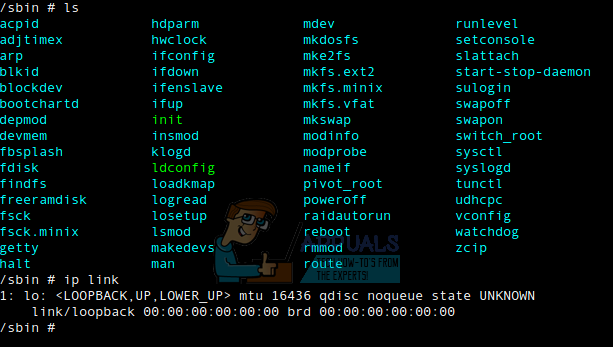
- Where is the ifcfg 0etho in linux on a mac serial#
- Where is the ifcfg 0etho in linux on a mac manual#
- Where is the ifcfg 0etho in linux on a mac full#
This error indicates that the aneth1 interface is configured instead of eth0. Remove the files that contain entries for eth0 or eth1 under /etc/udev/rules.d. Remove the HWADDR directive from the ifcfg-eth0 file under /etc/sysconfig/network-script. Missing required configuration variables for interface eth0/inet.
Where is the ifcfg 0etho in linux on a mac full#
Waiting up to 60 more seconds for network configuration.īooting system without full network configuration.Įrror 2 ci-info: | eth0 | False |. Ubuntu Error 1 cloud-init-nonet waiting 120 seconds for a network device.Ĭloud-init-nonet gave up waiting for a network device. SUSE Linux distribution errors Setting up (localfs) network interfaces: YYYY/MM/DD HH:MM:SS DoDhcpWork: Setting socket.timeout=10, entering recvĬustomer changed the IP from DHCP to FIXED YYYY/MM/DD HH:MM:SS ERROR:timeout: timed out YYYY/MM/DD HH:MM:SS ERROR: receiveBuffer = sock.recv(1024)


YYYY/MM/DD HH:MM:SS ERROR: File "/usr/sbin/waagent", line 3395, in DoDhcpWork YYYY/MM/DD HH:MM:SS ERROR:Traceback (most recent call last): YYYY/MM/DD HH:MM:SS ERROR:socket IOError args: (113, 'No route to host')Įrror 4 login: YYYY/MM/DD HH:MM:SS ERROR:timed out usr/sbin/waagent:2275: DeprecationWarning: ssage has been deprecated as of Python 2.6Įrror('socket IOError ' + e.message + ' args: ' + repr(e.args))
Where is the ifcfg 0etho in linux on a mac serial#
Errors in the serial console log CentOS Linux distribution errors Error 1 Bringing up interface eth0:ĭevice eth0 does not seem to be present, delaying initialization.Įrror 2 Bringing up loopback interface: īringing up interface eth0: Device eth0 has different MAC address than expected, ignoring.Įrror 3 YYYY/MM/DD HH:MM:SS Discovered Windows Azure endpoint: #.#.#.# Specifically, you may see the following errors.

The networking errors are typically logged in the serial console log. However, it ultimately cannot access the VM because of the network issue. When the issue occurs, the Secure Shell (SSH) connection that has correct permissions may start to connect to the VM. If eth0 isn't configured, the VM is not accessible over a network connection even when other tools indicate the VM is up. The primary interface on an Azure Linux virtual machine (VM) is eth0. Original product version: Virtual Machine running Linux Original KB number: 4010059 Symptoms local file which survives patching when using Automatic.This article fixes an issue in which network errors prevent you from connecting to Azure Linux virtual machines.
Where is the ifcfg 0etho in linux on a mac manual#
Therefore the only proven way is with a Manual MAC addressing scheme for SureBackup to work seamlessly between patching. Patching complete and before rebooting check the status of persistent files.ħles has been restored back to its original or latest and my entries above are not in the file.ħles has been generated. Now apply the latest OS patches, including kernel updates. Just edit 70-persistent-net-rules, delete the current line which binds the current mac address to eth0 which will look something like I have come to the conclusion that Manual MAC addressing is the only method to work when a replica or specifically SureBackup of my SuSE Linux Enterprise Server VM's takes place. This is accomplished by editing /etc/udev/rules.d/les on the source rather than removing it from the target. Make Ubuntu smarter by teaching it not to persistently bind VMware MAC addresses.

Just remember to not power on both of these on the same ethernet segment (probably not something you would do anyway, but two ethernet ports with the same MAC on the same LAN is an obvious no-no).Ģ. Since the MAC is statically entered in the configuration, the replica will have the same MAC address as the source system and Ubuntu will be happy. Assign a static MAC address to the source VM using vCenter. Since the UUID of the source VM and the UUID of the replica VM are not the same, neither is their MAC address, so Ubuntu things it's a "different" network card and is likely assigning it to "eth1" instead of "eth0".ġ. By default VMware uses some algorithm with the UUID to create the virtual MAC address of the network card, unfortuntely, by default Ubuntu binds devices by MAC address. When replicating, Veeam is replicating to a "different" VM with a different UUID because VMware doesn't allow two host with the same UUID to both be registered.


 0 kommentar(er)
0 kommentar(er)
